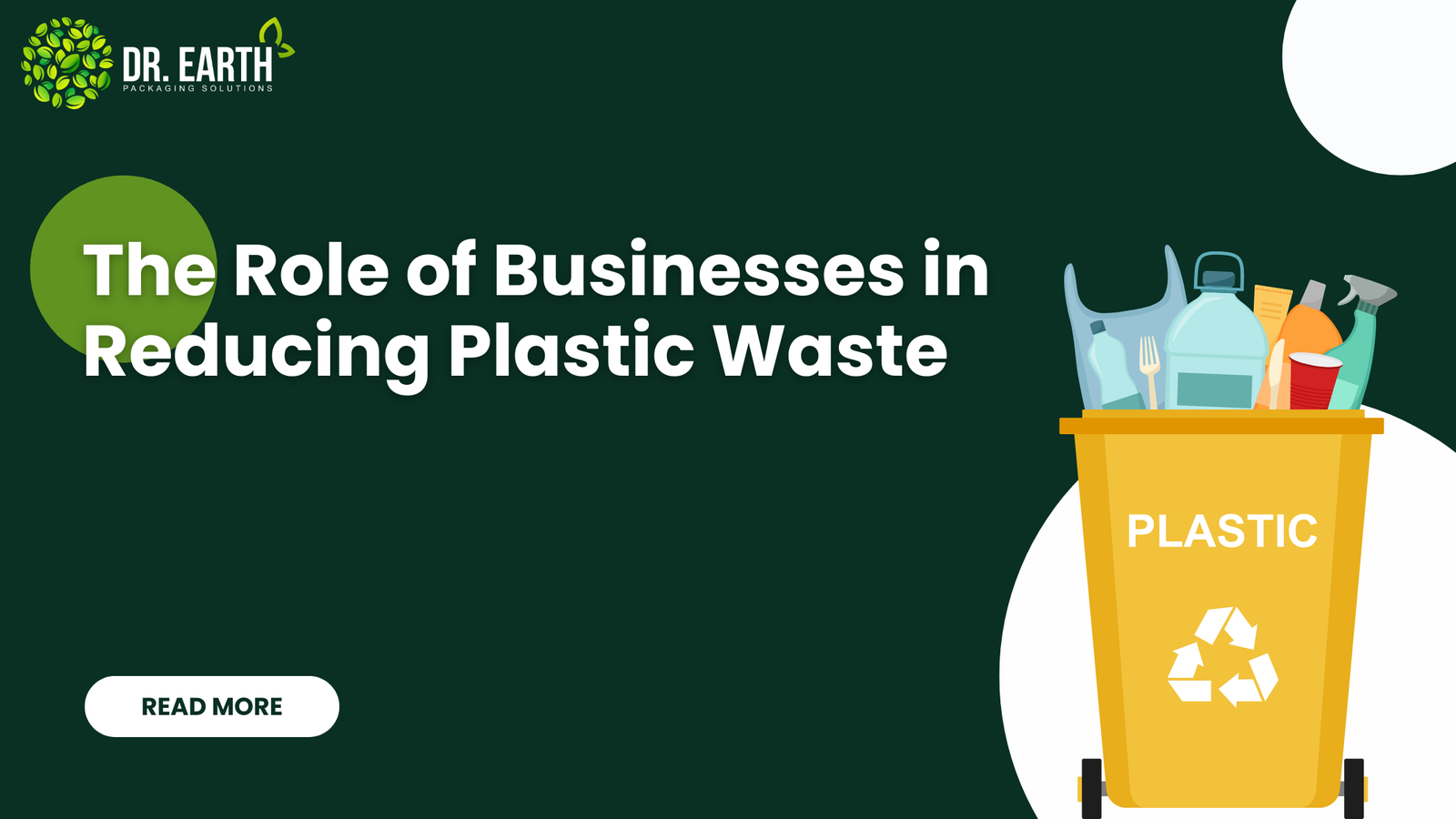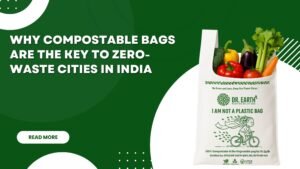
Plastic waste has emerged as one of the most poignant environmental concerns of our times. An estimated 300 million tons of plastic is produced annually, ending up at landfills, oceans, and natural ecosystems with terrible impacts on wildlife, human health, and the very planet itself. While personal efforts to decrease plastic waste are needed, it is mostly the business world that will ultimately have to effect change. This blog explores just how integral businesses can be in reducing plastic waste, used in combination with strategies, benefits, and real-life examples for inspiration to action.
Understanding the Plastic Waste Crisis
Before discussing the role of businesses, there must first be an understanding of the gravity of the plastic waste crisis. These are just a few statistics:
- Plastic waste reaches the ocean at a rate of 8 million tons each year, affecting marine life and ecosystems.
- It is predicted that by 2050, if the going on trend is continued, then there will be more plastic in the ocean than there are fish in terms of weight.
- Plastic waste takes centuries to break down, and so it leads to long-term environmental degradation.
Consequences of plastics in the environment Plastic persists in the environment forever, not affecting just wildlife but human health by contaminating sources of food and water. Due to such reasons, the world at large is getting concerned about it, and there is a growing recognition of the need for urgent action.
Why Businesses Need to Act
Companies are now one of the primary entities involved in the production and consumption of plastics. Indeed, the levels of packaging and disposables that companies produce are high. Here are some reasons why companies must act:
a. Corporate Responsibility
Ordinarily, companies owe themselves a moral responsibility to reduce their negative impacts on the environment. As custodians of the environment, businesses must always strive to achieve sustainable consumption and production practices, reducing plastic waste in particular.
b. Consumer Expectations
Today, consumers are more concerned with the environment than ever. According to a Nielsen survey, 66% of consumers said they are willing to pay extra for sustainable brands. Businesses that could not do something about plastic waste will be left by customers and market shares.
c. Regulatory Pressures
Governments around the world are implementing stricter requirements on plastic manufacture and waste management. A business that takes good care of plastic waste is in a healthy place to be in compliance and not have consequences or fines attached.
d. Economic Benefits
Reduction in plastic waste may save businesses money. Saving on material, embracing what is sustainable, improves operational performance as well as the bottom line.
Strategies for Businesses to Reduce Plastic Waste
Businesses will be able to affect plastic waste if they implement strategies that address their kind and type of business and operations. Some of the key strategies include the following:
a. Rethinking Packaging
This is one of the major contributors to plastic waste. Businesses can:
- Select sustainable materials: These must be biodegradable, recyclable, or compostable.
- Reduce packaging size: Businesses can shrink packaging as a way to reduce excess material usage.
- Adopt refillable systems: Give consumers a refill incentive to send them back for refills rather than buying new plastic containers.
b. Innovating Product Design
Develop environmentally friendly products. This may include:
- Creation of long-lasting products: Design items that last longer and can withstand wear and tear before replacements are required
- Design for recyclability: It should be easy to recycle at the time of the end of life cycles
c. Implementing Circular Economy Practices
A circular economy is one sends as few resources as possible into landfills or incinerators. Companies may:
- Implement take-back programs: Give customers a way to return products for recycling or re-use.
- Partner with suppliers: Implement closed-loop systems aimed at minimizing waste with suppliers.
d. Raising Awareness and Educating Consumers
Companies can shape customer behavior. Some examples include:
- Develop sustainability programs: Advertise and push sustainability initiatives on plastic waste reduction through the media and social media.
- Educating your customers: You provide them with tips and resources on how to reduce plastic usage at home and throughout the day.
Real-World Examples of Businesses Leading the Way
The following are some companies that have taken serious initiatives to curb plastic waste and are worth emulating by other companies:
a. Unilever
Unilever is a multinational consumer goods company, which declared that all its plastic packaging will be reusable, recyclable or compostable by 2025. In fact, innovation in refill stations and reusable containers reduced plastic waste greatly.
b. Coca-Cola
Coca-Cola hopes to collect and recycle the same amount of bottles or cans it sells by 2030. For this, it invests in sustainable packaging, that includes plant-based materials, and raises awareness for its “World Without Waste” initiative, focusing on plastic waste.
c. IKEA
For instance, IKEA has promised to utilize renewable or recycled resources in its products prior to 2030. The company has also phased out the plastic single-use products and introduced sustainable packaging alternatives that will help eliminate plastic waste.
d. Starbucks
Starbucks is highly engaged in reducing its usage of plastic straw with its development of strawless lids and encouraging use of reusable cups. An incentive to consumers for bringing their cups is that Starbucks encourages the living of a sustainable lifestyle.
The Benefits of Reducing Plastic Waste for Businesses
Apart from the moral imperative, reducing plastic waste offers the following business advantages:
a. Enhanced Brand Reputation
The companies that invest in sustainability showcase their brand reputation through themes of environmental values and as an aspect that attracts consumers who are concerned with the environment, thereby leaving a company ahead of its peers in a competitive market.
b. Increased Customer Loyalty
Showing concern for plastic wastage is a way to augment customer loyalty. Customers are bound to respect organizations that reflect and work toward becoming a cleaner world with their endeavor.
c. Innovation and Growth Opportunities
Sustainability can sometimes trigger innovation and enhance growth opportunities within markets. Business ventures that focus on an eco-friendly product and practice enhance their differentiation position and also appeal to a burgeoning population of green-conscience consumers.
d. Long-term Cost Savings
Also, waste reduction methods would result in a lot of money-saving at the long end. Besides using minimal material and saving on waste disposal costs, businesses would make profits
Overcoming Challenges in Reducing Plastic Waste
Although the merits of plastic waste reduction are very obvious, businesses may still face challenges in having the practices come to fruition. Below are common challenges and potential solutions.
a. Initial Costs
Using non-conventional materials or processes for sustainability may incur initial costs. However, businesses may consider this investment since, in the long run, it will also attract savings over time.
b. Supply Chain Limitations
Finding a sustainable supplier and material source is challenging. The company has to find out more about the supplier and build a relationship with them on sustainability.
c. Resistance to Change
Employees and consumers could resist new ways of doing things. Educating and training the individual of the urgency of sustainability could help in minimizing change resistance.
The Future of Business and Plastic Waste Reduction
Businesses have no option but to adjust to the new landscape as awareness about the plastic waste crisis continues to grow. Some of the trends that will shape the future of plastic waste reduction are as follows:
a. Increased Regulation
The government is increasing regulations against plastic waste. However, in doing so, it compels businesses to ensure more sustainable practices or prepare themselves to incur penalties. The firms that take their initiative beforehand will be better positioned.
b. Growing Consumer Demand
Customers want to increasingly buy sustainable products. Companies having sustainability in their focus would see significantly higher sales and retention for customers.
c. Innovation in Materials
There are technological breakthroughs that inspire new sustainable materials. The companies who advance and adopt those new solutions will take an edge in the market.
Conclusion
The role of businesses in reducing plastic waste cannot be overstated. As major contributors to the plastic crisis, companies have a responsibility to adopt sustainable practices and lead by example. By rethinking packaging, innovating product design, and raising consumer awareness, businesses can significantly reduce their environmental impact and contribute to a greener future.
By taking action against plastic waste, businesses can not only enhance their brand reputation and customer loyalty but also foster innovation and long-term cost savings. The time for change is now, and businesses have the power to make a real difference in the fight against plastic pollution
FAQs
Q-1 What is plastic waste?
Ans- Plastic waste refers to any plastic material that is discarded and not reused or recycled, leading to environmental pollution.
Q-2 How can businesses reduce plastic waste?
Ans- Businesses can reduce plastic waste by rethinking packaging, innovating product design, implementing circular economy practices, and raising consumer awareness.
Q-3 Why is it important for businesses to reduce plastic waste?
Ans- Reducing plastic waste is crucial for environmental sustainability, meets consumer expectations, complies with regulations, and offers economic benefits.
Q-4 What are some examples of companies reducing plastic waste?
Ans- Companies like Unilever, Coca-Cola, IKEA, and Starbucks have implemented successful strategies to reduce plastic waste and promote sustainability.
Q-5 What challenges do businesses face in reducing plastic waste?
Ans- Challenges include initial costs, supply chain limitations, and resistance to change. However, education and collaboration can help overcome these obstacles.
Share:
Related Posts














